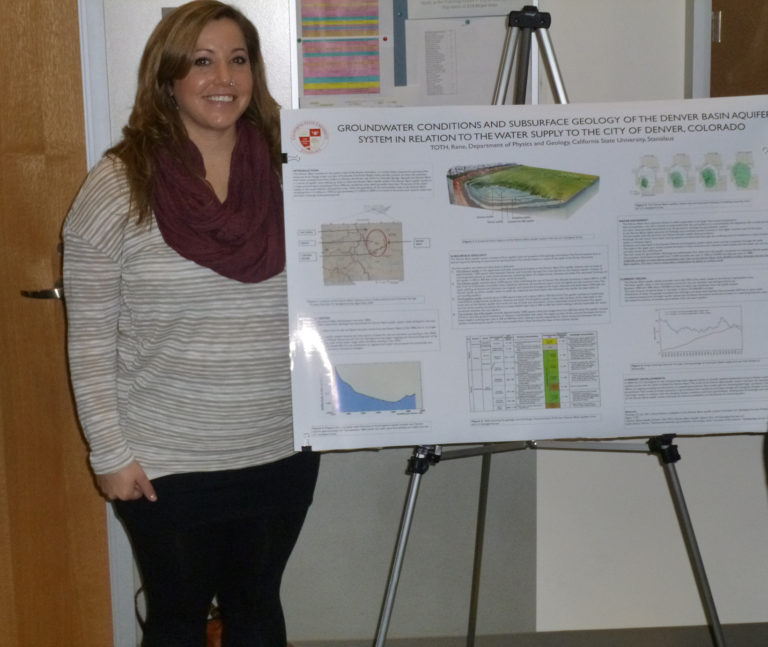

It was standing room only last Friday night in the Sierra Hall at Modesto Junior College West. Audience members included a former state Secretary of Agriculture, several members of the Stanislaus Water Advisory Committee, the President of the Central Valley Farmland Trust, and the Conservation Chair for the Yokuts Chapter of the Sierra Club*.
People had filled the room not to attend a celebrity appearance but to hear an introduction to a new groundwater model by Steve Phillips, a hydrologist with the U.S. Geological Survey. The packed hall offered strong evidence that pumping by industrial-sized wells on the Stanislaus County’s east side has galvanized public interest and made groundwater a key issue throughout the region.
Entitled “Modeling Modesto’s Groundwater,” Phillips’ model will enable a very precise look at how groundwater moves through Modesto’s aquifers. Stanislaus County Geologist Dr. Horacio Ferriz says the model will help local authorities defend their actions when enforcing the state’s new groundwater regulations.
“The model divides the region into quarter-mile squares,” said Dr. Ferriz last Saturday. “If you’re going to deny someone permission to pump groundwater, you’d better have very good and specific reasons.”
Dr. Ferriz was supervising a water event of his own at the Naraghi Hall of Science on the California State University Stanislaus campus in Turlock. In addition to his role as county geologist, Dr. Ferriz is a tenured professor and Chairman of the Geology Department. Students from his Geology 4810 class had constructed posters illustrating issues relevant to the course content, “Development and Management of Water Resources.”
‘The course is really an introduction to my spring hydrogeology class,” said Ferriz. “The spring class is more for geology majors. Here, I have some who are geology majors and some who are not.”
Geology major Rene Toth says the class is fascinating but rigorous. “His tests take two hours,” she said. “There’s lots of math and diagrams.”
“We have to figure gradients and understand the hydrological cycle,” said Lucas Trippo, a General Studies major who is minoring in geology. “It’s hard but it’s really important.”
Toth’s poster was titled, “Conditions and Subsurface Geology of the Denver Basin Aquifer System in Relation to the Water Supply to the City of Denver, Colorado.”
“The Denver system is a lot like ours,” said Toth. “There are a lot of similarities.
Our own aquifer system will soon be one of the best understood in the nation, if not the world. Steve Phillips’ presentation showed aquifers around Modesto are like “layer cakes” with strata of various “hydraulic conductivity” stacked atop one another. His slides showed super-saturated aquifers around Modesto and Woodward Reservoirs, as many have suspected.
While some have speculated that the aquifer system around Modesto features isolated sources of groundwater, Phillips’ model suggests most of the system is connected. Water finds a way through most anything, and moves more easily horizontally than vertically.
However, as Dr. Ferriz’s students have learned, the “gradient” is important. When the water table drops in one part of an aquifer, it’s often replaced by water from a source higher up the slope, however slowly.
Phillips also explained the interaction between rivers and groundwater.
“When the river’s surface is higher than the water table,” he said, “the river contributes to groundwater. And when the river’s surface is below the water table, groundwater contributes to the river.”
These new findings will present both challenges and opportunities. And, as Valley citizens confront the complex realities of drought and the growing evidence of climate change, most might agree with Dr. Horacio Ferriz:
“Everyone should be required to understand some basic geology,” he said last Saturday. “It’s really important.”
*Bill Lyons, Thomas Smith, Neil Hudson, Jim Mortensen, Denny Jackman, and Brad Barker.